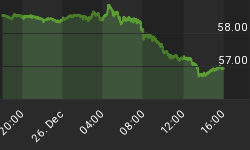Yesterday's session ended on a positive note with an uncomplicated correlation in between the TICK and the SPY's intra-day movements.
But what about those more complex moves like the red circled area below which we did not discuss? (See the chart below).
Note that in this case, the TICK's red and yellow trend lines briefly went positive (above the horizontal lines), and then went back down again. (Also, at that time, the green trend line was still in a down trend, but one that was moving sideways.) In the bottom portion of the chart, you can see that the SPY paused in consolidation and then continued lower.
Think about it, if the market did not go up when the red and yellow lines were moving above the horizontal line, then there must have been some kind of conflict going on. The Question is ... What was the conflict and how could you see it in conjunction with what was going on with the TICK?
For the answer, see the second chart ...

When the market is in session, the larger investment firms often hedge their positions and use put and call options to do so. Sometimes, investors do various call/put spreads to generate income.
Options activity is reflected back into the VIX (Volatility Index). As you may know, the VIX is calculated in real time as a weighted blend of option price ranges on the S&P 500. As such, many use it as a guide to as to the expected movement for the S&P 500 index over the next 30 days. Since the VIX shows dynamic movement, the future expectations can change quickly relative to the change in options activity.
Enough explanation about that, suffice it to say that the VIX has a very valuable correlation between the $TICK and the SPY's movements as we shall see ...
Below is a merged chart of the TICK and the VIX on a 1 minute basis. See the red circle on the TICK chart where there was confusion, and then look down to the VIX portion of the chart to see that it showed what the true bias was. Note that we used the same Smoothed Moving Average settings on both.
So, when you observe the VIX, you can see that it was clearly trending up until just before 12:45 AM. (See the second red circle at the bottom of the chart.)
And since the VIX moves in the opposite direction of the stock market, it meant that the S&P had negative pressure coming in to push it down lower. Let's see the third chart to see how that played out ...

In this third chart, we simply merged the VIX and SPY charts together.
If you look at all three charts we discussed (the TICK, the VIX, and the SPY), you will see how they all correlated together with all of them finally signaling that the SPY would once again start moving UP just before 12:45 AM.
P.S. If you aren't already one of our paid subscribers, please think about giving it some consideration ... thank you.

















